Asparagus
Cool-season vegetable
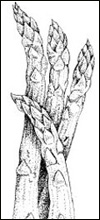 Which varieties of asparagus can tolerate heat?
Which varieties of asparagus can tolerate heat?
Some of the “West Coast” varieties such as ‘Atlas’ and ‘UC 157’ are more heat tolerant (85 degrees Fahrenheit) than the Jersey varieties (e.g., ‘Jersey Knight’, ‘Jersey Gem’). However, they may be subject to winter injury in central and northern Missouri. Also, they don't perform well in high humidity environments. In general, the West Coast varieties do not yield as well as the Jersey varieties.
When should asparagus be harvested?
A limited harvest of asparagus can be made the second year after planting (one-year old) crowns for about 2 weeks or until the spear starts getting small in diameter. You must be careful not to overharvest asparagus. Asparagus should be harvested when the spears are 6 to 8 inches in length and the tips are still tight.
Is it better to cut or snap asparagus when harvesting?
Asparagus spears can be cut 1 to 2 inches below the soil with a knife or snapped with your hands. Many growers prefer to snap since it is faster. Also, snapping breaks the spear at the point where it is less fibrous.
Should I use salt to control weeds in asparagus?
Asparagus can tolerate salt, but it does not promote healthy asparagus growth. I do not recommend applying salt to asparagus for weed control. There is a risk of salt accumulation in the soil, and salt can reduce infiltration of rainwater and potentially leach on other soil, damaging border plants.
Beets
Cool-season vegetable
What causes beets to develop tops (leaves) but not roots?
Beet “seeds” are actually fruits that contain several tiny seeds. Thus, beets need to be thinned early (2 inches tall) to one plant per inch. Failure to thin makes the beets too crowded, prohibiting root formation. Also, planting beets too late in the season so that the weather turns hot can restrict beet formation.
Can beet tops be eaten?
Yes. Beet tops can be harvested when young and eaten as greens. There are some cultivars of beets that are specifically developed for greens production. They include ‘Green Top Bunching’ or ‘Crosby Egyptian’.
Are all beets round?
No. There are some cultivars that are cylinder-shaped. ‘Formanova’ is a cylindrical beet that can be grown successfully in Missouri.
Broccoli
Cool-season vegetable
What is meant by “hardening off” broccoli transplants?
Hardening lessens the stress of transplanting. Broccoli transplants for spring planting should be exposed to cool temperatures (50 to 55 degrees Fahrenheit) for 10 days. Make sure that you do not stress or overharden broccoli transplants. If this happens, they will flower prematurely.
What causes small plants, poor heading, and early flowering of broccoli?
Broccoli that is planted too late in the spring will experience heat stress and flower early. Transplanting an oversized transplant will often result in premature flowering. Other causes of early flowering include nitrogen stress (too little) or overhardening.
How large should the head of broccoli be before cutting?
Broccoli should be harvested when the head diameter is 4 to 8 inches.
Should I plant broccoli in the spring or fall?
Fall broccoli is considered by most gardeners to have better broccoli than spring broccoli in Missouri. Fall broccoli can be direct seeded or transplanted.
Do not plant broccoli if the temperatures are high (more than 90 degrees Fahrenheit).
Cabbage
Cool-season vegetable
 What can be done to prevent cabbage heads from splitting?
What can be done to prevent cabbage heads from splitting?
Splitting is caused by pressure of excessive water taken up after the heads are solid. Cutting the roots (spading on two sides of the plant) or breaking the roots (lifting and twisting the head to one side) can reduce splitting, but it also damages the plant and requires that the head be harvested relatively soon. Some cultivars are less susceptible to splitting.
My cabbage failed to produce a head. Why?
Cabbage will not form a head if it is planted too late (and exposed to high temperatures), underfertilized, or drought stressed.
I have noticed small white to cream-colored butterflies flying around my cabbage plants. What are they?
These are the adult stage of the imported cabbage worms looking for a place to lay eggs. The eggs hatch and begin to feed on leaves.
How do I control worms in my cabbage and broccoli?
Use a lightweight row cover to exclude moths and prevent them from laying eggs. Using a Bt (Bacillus thuringiensis) insecticide such as Javelin, Dipel, Thuricide, Biobit, Agree and Xentari will effectively control worms and conserve beneficial insects. Begin application when worms are small. You may want to apply a couple drops of liquid detergent per gallon to aid in spray coverage.
Carrot
Cool-season vegetable
Why don’t my carrot seeds germinate?
It takes about 3 weeks for carrot seed to germinate and emerge from the soil. Do not plant carrot seeds deeper than 1/4 inch.
Why do carrots develop a “forked” shape.
Carrots need a loose, friable soil to develop a good shape. Forking is caused by anything that impedes root growth. This includes nematodes, stones, or heavy, compacted soil.
Why are my carrots bitter and woody?
Carrots are a cool-season vegetable. When daily high temperatures exceed 80 degrees Fahrenheit, carrot color and taste will diminish.
What causes bitter, green tops on carrot roots?
Exposure of the roots to sunlight will cause the roots to get sunburned. The green color is the plant pigment chlorophyll. Hill soil around the shoulders of the carrot roots to prevent exposure to the sun.
Cauliflower
Cool-season vegetable
What causes leaves in the head of cauliflower?
This occurs when cauliflower matures during hot weather. Cauliflower grows best at 60 to 75 degrees Fahrenheit. Too-high temperature can prevent head formation.
What is meant by “blanching” cauliflower?
Blanching is performed to maintain a white color to the head. If cauliflower is not blanched, the head may turn green or yellowish brown. Blanching is performed when the head has 2 to 3 inches of white curd. The outer or wrapper leaves are wrapped and tied over the head. There are self-blanching cultivars (e.g.,'Fremont').
The cauliflower I planted was self-blanching, but leaves did not cover the head totally. Why?
Self-blanching cauliflower varieties need cool temperatures. Late planting or low fertility can also reduce vigor, and prevent leaves curling over the center of the head.
I decided to try a purple cauliflower this year. Is it best to grow it in the spring or fall?
Purple cauliflower is actually a type of broccoli. To develop a good purple coloration, it needs cool weather, so fall production is preferred. The purple color will leach when cooked.
Cucumber
Warm-season vegetable
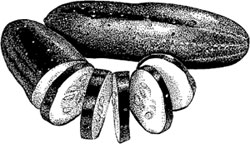 Why do cucumber vines suddenly wilt and die?
Why do cucumber vines suddenly wilt and die?
Cucumbers are susceptible to bacterial wilt that is transmitted by striped and spotted cucumber beetles. The best method for control of this disease is to control the cucumber beetles. The slicing cucumber cultivar 'County Fair' has some tolerance to bacterial wilt.
What makes cucumbers bitter?
Generally stress during growth can make cucumbers bitter. These include heat, nutrient or water stress.
Can cucumbers cross-pollinate with cantaloupes and watermelons?
No. Cucumbers will not cross-pollinate with other cucurbits because they are different species.
Eggplant
Warm-season vegetable
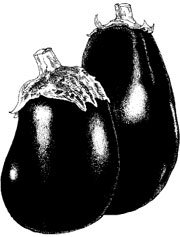 Why are there a lot of small holes in the leaves of my eggplant plants?
Why are there a lot of small holes in the leaves of my eggplant plants?
This damage is caused by the flea beetle. Rowcovers will provide some protection. Insecticides are available labeled for flea beetle control. Consult your local MU Extension center for the latest recommendations.
Why do eggplant fruits not ripen properly?
Stunted plants from cool weather, flea beetle damage or poor, infertile soils will fail to develop a quality fruit.
Irish potato
Cool-season vegetable
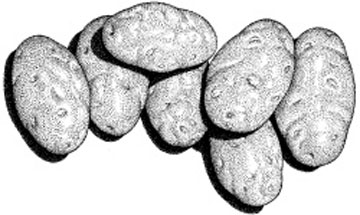 How many seed potatoes should I plant for one person?
How many seed potatoes should I plant for one person?
Generally, a 100-foot row will provide enough potatoes for one person each year. About 15 pounds of seed potatoes will be needed to plant a 100-foot row.
When should I harvest potatoes?
New potatoes can be harvested as soon as they reach a suitable size. Potatoes for storage can be harvested when the vines turn yellow. Do not harvest potatoes when the soil is very wet. This will increase the chance of rotting.
My potatoes have formed a green fruit that looks like a tomato. Is it possible that the potatoes cross-pollinated with my tomatoes?
No. Tomatoes, peppers, eggplants and potatoes are in the Solanaceae or nightshade family, but they are self-pollinated. The green fruit that is observed is actually the true fruit of the potato that contains many small seeds. The fruit is poisonous and should not be eaten.
Are green-skinned potatoes really dangerous?
Green skins are caused by exposing potatoes to light. The green portion contains an alkaloid called solanine that can cause illness. All green portions should be thoroughly cut off before cooking.
My potatoes are misshapen. Why?
Usually, potatoes are misshapen when they are exposed to dry weather. The dry soil prevents the potato tuber from growing at an even pace. Some cultivars of potato are more misshapen than others.
What causes potatoes to have black spots or streaks inside them?
Many factors can cause internal blackening of potatoes. Most common are fusarium wilt, viruses, and high temperatures before harvest.
How should I store potatoes?
Potatoes should be stored in a dark, cool (42 to 45 degrees Fahrenheit), humid location. This prevents sprouting and shrinkage.
Lettuce
Cool-season vegetable
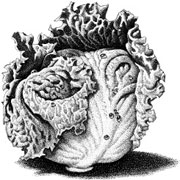 Why is my lettuce bitter?
Why is my lettuce bitter?
Lettuce is a cool-season vegetable. Bitterness occurs when lettuce is grown during high temperatures. Washing and storing the leaves in the refrigerator will remove the bitterness in 48 hours.
My lettuce seeds did not germinate. Why?
Lettuce seeds require light to germinate; perhaps the seeds were seeded too deep. Also, old seed will have reduced germination. Lettuce seed does not store well.
What are the easiest types of lettuces to grow in Missouri?
There are four types of lettuce: crisphead, butterhead, leaf, and romaine. Head lettuce requires a relatively long growing season and will turn bitter or bolt if temperatures in late spring are very high. So, I would not recommend trying to grow it in Missouri. Leaf, butterhead, and romaine can withstand greater fluctuations in the environment and have a shorter growing season.
Okra
Warm-season vegetable
Why doesn’t my okra bear?
Temperature extremes, either too hot or too cool, will prevent okra from setting. Poor soil fertility or drainage can aggravate the problem.
Why are my okra pods tough and stringy?
The pods have become too old. Pick when pods are about 2 inches long.
Onion
Cool-season vegetable
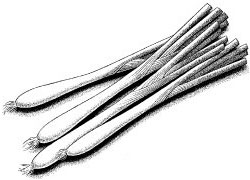 Is it best to plant onion seeds, onion plants or onion sets in the garden?
Is it best to plant onion seeds, onion plants or onion sets in the garden?
Onion sets are easiest to handle and develop quickly for green onions as well as onions for winter storage. Onion plants are slower to develop but also produce good crops. Plants are used for growing the Bermuda and Spanish type onions. Seeds for onions may be started early in coldframes or in the garden and thinned. They are suitable for green onions in early summer, but usually hot weather and long day lengths stop growth before large sized onions can develop.
Is there any way to prevent onions from going to seed?
Plant onion sets of bulbs no larger than 5/8 inch in diameter. Larger bulbs have a greater tendency to bolt in the garden. The blooms of onions should be removed by hand as soon as they appear to prevent seed formation.
Peas
Cool-season vegetable
When should snow peas be harvested?
Snow peas should be harvested 5 to 7 days after flowering.
Pepper
Warm-season vegetable
What is the difference between green and red bell peppers?
Stage of maturity. Many of the popular hybrid bell peppers will develop red color when they are mature.
Why aren’t my peppers setting fruit?
Pollination can be reduced if temperatures drop below 60 degrees Fahrenheit or above 90 degrees. Too much nitrogen will reduce fruit set.
A worm has bored into my pepper stem and fruit? What is it?
This is probably a European corn borer. Remove weeds from surrounding areas. Stalk borers breed in weeds like ragweed and dock.
Pumpkin
Warm-season vegetable
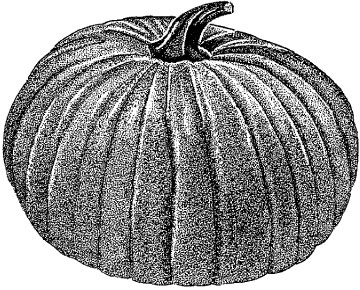 I have high populations of squash bugs, and I want to harvest my pumpkins early. Is this possible?
I have high populations of squash bugs, and I want to harvest my pumpkins early. Is this possible?
Yes. You can harvest your pumpkins early at the mature green stage. The skin should be tough enough that it cannot be punctured with your thumbnail. Pumpkins will develop color in storage, but it is recommended that they develop some color before early harvest.
Should I plant my pumpkins in my sweet corn?
No. Pumpkins cannot tolerate shade. Poor light can reduce fruit set.
How can I grow large pumpkins?
Choose a large-fruited variety such as 'Big Max', 'Atlantic Giant', or 'Burpee Prizewinner'. Remove all blossoms and fruit except one, so that all strength goes into the one fruit. Provide adequate space (150 square feet per plant), fertilization and moisture.
Rhubarb
Cool-season vegetable
Can I harvest my rhubarb the same year that I plant it?
Do not harvest rhubarb during the first year of planting. You can harvest for 1 to 2 weeks the following year.
How can rhubarb be kept from seeding? Should these flower stalks be removed?
All rhubarb will eventually flower. However, poor growing conditions such as drought and hot weather stimulate flowering. Cut off the flower stalks as soon as they are noticed to help prevent weakening of the plant.
Why are the stems of my rhubarb leaves green rather than red?
There is a difference between varieties in stem color. However, lack of color development in plants that once had red stems may be the result of too much shade.
Snap beans
Warm-season vegetable
 My snap beans look healthy but aren’t forming bean pods. Why?
My snap beans look healthy but aren’t forming bean pods. Why?
Bean blossoms will abort (drop) from the plants in hot, dry weather. Also, too much nitrogen fertilizer or manure will prevent pods from setting. Beans do not need a lot of nitrogen. Bean pods will not set if the soil is waterlogged.
My green beans have not emerged from the soil. Why?
Beans should be seeded when soil temperatures reach 65 degrees Fahrenheit in Missouri, which varies, from mid-April (southern Missouri) to late May (northern Missouri). Green beans also make a good fall crop in Missouri. Also, snap beans will not emerge if the soil is crusted or too dry.
Do pole beans or bush beans provide the most efficient use of garden space?
Bush beans can be spaced closer and will produce a larger quantity of beans at any one time than a similar planting of pole beans. However, pole beans will continue to produce, so that a more constant supply is available. In very limited space, pole beans may provide too much shade for neighboring crops, and the bush types would be preferable.
Southern pea
Warm-season vegetable
My southern pea plants are covered with a sticky substance. What is this?
This is honeydew that is excreted from aphids. Often lady beetles will be found on southern peas. Lady beetles feed on aphids.
Spinach
Cool-season vegetable
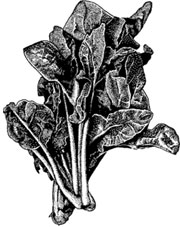 My garden spinach has formed a flower stalk. Why?
My garden spinach has formed a flower stalk. Why?
Spinach will bolt or form a flower stalk when exposed to long days and warm temperatures.
Can spinach be overwintered?
Yes. Spinach can survive temperatures as low as 20 degrees Fahrenheit without damage. You can seed spinach in Missouri for fall production in August. If you wish to overwinter, you can plant the spinach in October.
Is there a spinach that can be grown in hot weather?
There are some varieties of spinach that can tolerate warm weather. Consult your local MU Extension center for additional information. New Zealand spinach is not a true spinach but is a good summer substitute for it.
Summer squash
Warm-season vegetable
The leaves of my summer squash are mottled in color. What is the problem?
The problem may be one of three viruses that attack pumpkins, squash and watermelons in Missouri. If the plant has been diagnosed as having a virus, you should rogue it out as soon as possible to prevent spread of the virus.
My squash had formed small fruits, but they fell off the plant. Why?
Fruit drop of squash will occur if the flowers have not been pollinated. Also, if the fruits develop a rot on the end, it could be the disease blossom blight.
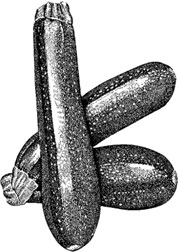 When should I harvest my zucchini?
When should I harvest my zucchini?
Zucchini should be harvested at a young stage for optimal maturity. The optimal size is 4 to 6 inches long and 1-1/2 inches in diameter. Generally zucchini is harvested every other day. The faster that you harvest, the faster additional new squash will be formed.
Will my zucchini cross-pollinate with my yellow, straightneck squash?
Yes. However, you will not see the effect of this cross until the following year if you plant the seeds. Summer squash can cross with each other and with acorn squash and pumpkins.
How can I control squash bugs?
Squash bugs must be controlled when the insect is immature. Once the insect has developed into an adult, it is difficult to control with insecticides. Consult your local MU Extension center for the latest insecticide recommendations.
Sweet corn
Warm-season vegetable
 Why does super sweet (Sh2) sweet corn need to be isolated from field corn or other types of sweet corn?
Why does super sweet (Sh2) sweet corn need to be isolated from field corn or other types of sweet corn?
Super sweet cultivars must be isolated from all other sweet and field corn because cross-pollination between super sweet and other corn cultivars will produce kernels that are tough and starchy. Isolation by a distance of 300 feet or 12 days difference in silking is recommended.
How do I control corn earworm?
Corn earworm is a serious pest of sweet corn in Missouri. One strategy for control is to plant as early as possible. For example, in northern Missouri, I would recommend planting sweet corn as soon as soil temperatures reach 55 to 60 degrees Fahrenheit. By planting early, you can avoid peak populations of corn earworm moths. Also, selecting varieties that have tight-fitting husks can reduce earworm damage. Bt sweet corn has been genetically engineered to produce a protein that kills corn earworms, for those not opposed to the use of GMOs.
Why didn’t the ears on my sweet corn fill out to the tip?
Poor tip fill can be cause by poor pollination. Hot, dry weather during silking inhibits good pollination. Rather than plant a single row of sweet corn in the garden, I would recommend planting several short rows. This will allow for better pollination.
When should I harvest sweet corn?
Sweet corn should be harvested when the silk is dried and the ears feel solid within the husk. The kernels will be milky and tender. Generally, sweet corn is harvested 21 to 28 days after silking. Five to 6 days are required for pollination when the silks emerge. Sweet corn should be harvested in early morning when the sugar content is the highest in the kernels.
Sweet potato
Warm-season vegetable
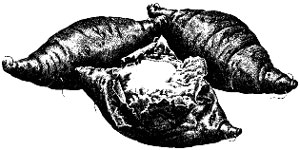 Can I grow sweet potatoes in Missouri?
Can I grow sweet potatoes in Missouri?
Yes. Sweet potatoes can be grown with success in Missouri. They require 120 days to reach marketable size. Sweet potatoes can be planted in the garden after the last frost of the season.
Is it necessary to plant sweet potatoes on a ridge?
Root growth and shape is enhanced when sweet potatoes are grown on a ridge. As the plant develops, additional soil can be thrown on the row to build up a ridge.
Tomatoes
Warm-season vegetable
 Why do tomatoes crack?
Why do tomatoes crack?
Tomatoes will crack when there is a fluctuation in the growth of the tomato plant. So, anything that affects the even, steady growth of the tomato can induce cracking. Usually, you see cracking in dry weather when rainfall is uneven.
Why do blossoms drop from my tomatoes?
Blossom drop occurs as a result of stress. Anything that inhibits pollination and fertilization, such as low or high temperatures, high relative humidity, and excessive wind can cause blossom drop.
My tomatoes have a green worm feeding on the fruit. The head is brown and it has small, short spines on its abdomen. What is this insect?
The insect is the tomato fruitworm (also known as corn earworm), which is normally a problem with late summer and fall tomatoes. This insect can be controlled by physically removing it from the fruit or using an insecticide. Consult your local MU Extension center for the latest recommendations.
My tomatoes are misshapen. Why?
Misshapen fruit is likely the result of poor pollination. Pollination is inhibited by low temperatures (less than 55 degrees Fahrenheit), high temperatures (Day more than 92 degrees Fahrenheit; Night more than 70 degrees Fahrenheit) or cloudy weather at the time of flowering or fruit set.
What is the difference between red and yellow tomatoes?
Besides color, yellow tomatoes have a slightly higher pH (lower acidity) than most red tomato cultivars. Additionally, yellow tomatoes tend to have a higher sugar content than red ones.
My tomato leaves are dying from the bottom of the plant up. What could be the cause?
One likely cause is early blight. Early blight is a fungus that attacks the tomato leaves and fruit beginning in June in Missouri. A distinguishing characteristic of early blight is the lesions on the leaves and stems. Early blight lesions have a distinct bull’s-eye appearance. To control this disease, stake and mulch the tomatoes, increase plant spacing to reduce humidity around the plant and remove some of the lower leaves. For total control, the application of fungicides might be necessary. Consult your local MU Extension center for the latest recommendations.
My tomatoes are wilting. What could be some possible causes?
Tomatoes can exhibit wilting from several factors including:
- Verticillium wilt
Most new tomato cultivars have resistance to verticillium wilt. More of a problem in cooler weather. - Fusarium wilt
One side of the plant exhibits wilting symptoms first. Fusarium wilt is more prevalent in warmer weather. - Nematodes
Soil-borne roundworms that attack the root system of tomatoes preventing nutrient and water uptake. - Tomato spotted wilt virus
This disease is transmitted by thrips with distinct leaf and fruit lesions accompanied by wilting. - Walnut wilt
If tomatoes are planted close to walnut trees or related species including butternut and pecan, a chemical (juglone) released by these trees will induce wilting of tomatoes. - Waterlogged soil
Sometimes when a soil gets waterlogged and the soil temperatures are high, it causes wilting of the plant.
What are the advantages of staking tomatoes?
Staking of tomatoes improves light interception, reduces diseases and sunscalding, and increases earliness and yields of tomatoes.
Why do tomatoes get a black spot on the bottom of the fruit?
The black spot on the bottom or blossom end of the tomato is called blossom end rot. Blossom end rot is a problem in dry, hot weather. Make sure that your pH is adequate (6 to 6.5), and the tomatoes are evenly watered.
What is the difference between a husk tomato and a tomatillo?
Tomatillo along with ground cherry are different species of husk tomato. Both produce a greenish-yellow fruit within a papery husk and are used for making preserves or sauces.
How much water do my tomato plants need?
Adequate water is very critical for successful tomato production. Like most vegetables, tomatoes require between 1-1/2 and 2 inches of water per week. When watering tomatoes, try to keep the foliage as dry as possible to help prevent disease infestation.
What is the difference between indeterminate and determinate tomatoes?
Indeterminate tomato plants grow all season until they are killed by frost. Determinate tomatoes grow to a genetically predetermined height and then stop. Both hold the prospect of producing high yields, although indeterminate types produce fruits over a longer period of time.
My tomato fruits have small whitish spots scattered over their surface. What might be the cause?
It sounds as if your tomatoes are being attacked by stink bugs. The latter have mouthparts that pierce the tomato fruit’s skin and leave a tiny hole and whitish spot behind. Controlling weeds both in and around the garden can help to reduce stink bug populations.
Watermelon and cantaloupe
Warm-season vegetable
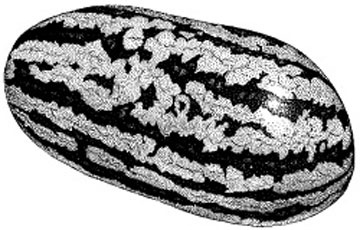 I am growing my watermelons next to my cantaloupes. Will they cross-pollinate?
I am growing my watermelons next to my cantaloupes. Will they cross-pollinate?
No. Cantaloupes and watermelons are in the same family but they are a different genus and species. Therefore, they will not cross-pollinate. I recommend that you grow cantaloupes away from your watermelons for disease control. Cantaloupes will get many leaf diseases that could spread to watermelons.
My cantaloupes have not set any fruit. Why?
Cantaloupes are cross-pollinated by bees. If you do not have good bee activity, pollination and fruit set are reduced.
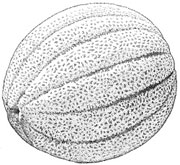 What’s the secret for growing good-tasting melons?
What’s the secret for growing good-tasting melons?
The taste of watermelon and cantaloupe is determined by the concentration of sugars. Sugars are produced by photosynthesis in the leaves. So it is extremely important to keep the vines healthy and well fertilized.
How do I control cucumber beetles?
Cucumber beetles are a significant problem in production of cucurbit vegetables. These insects do the most significant damage to cantaloupes 2 to 4 weeks after transplanting or seeding. Row covers can be used until female flowers form. They must be removed to allow for pollination. Interplanting radishes may repel cucumber beetles. Application of insecticides to trap crops planted earlier than your main crop can provide control.
What are seedless watermelons?
Seedless watermelons are formed by cross-pollinating a seeded cultivar (with two sets of chromosomes) with a treated cultivar that has four sets of chromosomes. The resulting offspring from this cross is called a triploid seedless. This seed is planted as a seedless watermelon and is cross-pollinated with a seeded cultivar to produce a seedless fruit. You must have a seeded cultivar in order for the seedless to produce a fruit.
How do I determine if my watermelon is ready to harvest?
You can look at several factors:
- Thumping the fruit will produce a hollow metallic sound when the fruit is ripe.
- The ground spot (where the melon rested on the soil) will turn yellow.
- The tendril across from where the stem is attached to the vine will be dry and brown.
My cantaloupe vines have set a lot of fruit, but the vines have collapsed. Why?
Vine collapse of cantaloupe can be caused by diseases or failure of the plant to establish a deep root system.
General gardening questions
When is the best time of the day to transplant vegetables?
Afternoon to evening, because the transplant will be exposed to less heat and stress.
May I use treated wood to make my raised bed?
Do not use railroad ties because creosote vapors can be toxic to plants. Treated lumber should not be in direct contact with a root vegetable like potatoes or beets. You could line your bed with a landscape fabric for protection.
Should I plant the vegetable seeds I had left over from planting last season’s garden?
In general, if the seeds have been stored well, many of them will germinate fairly well the second year. Expect reduced germination, however, so plant thicker than suggested. If good germination results, thin seedlings appropriately. Many garden seeds may be kept for 2 years or even longer in a cool, dry location. Place in a tight jar or can to keep them dry. Seeds that lose vigor most rapidly in storage include sweet corn, lettuce, okra, onion, parsley, parsnip and salsify.
What is the best kind of manure for the garden?
Cattle, horse or swine manures containing straw are the best. Cattle and pig manure contains 5 to 10 pounds of nitrogen per ton. Poultry and sheep manure have higher levels of nitrogen and may supply more nitrogen than needed early in the season. Whatever manure is used, don't apply fresh manure to the garden before planting. It is preferable to compost the manure for about a year before using. It may also be plowed under in late summer for planting a garden the following spring.
Is it possible to apply too much lime to the garden?
Yes. Most vegetables grow best in soils slightly acid. Excess liming can make the soil too alkaline, which reduces the availability of some nutrients and reduces plant growth.
Are wood ashes harmful to the garden?
No. Wood ashes supply potassium as well as some other nutrients to the soil. They also make the soil more alkaline. Have your garden soil tested every 5 years to determine pH. Don't use wood ashes when pH readings are above 7.0.
How much cattle or barnyard manure can be used on the garden?
It is generally safe to use composted manures at a rate of 50 to 100 pounds per 100 square feet of garden.
Is it safe to add sawdust (shavings, other wood products) to the garden?
Yes. However, it is better to have these products composted for a year before addition. Wood products, especially when fresh, tie up nitrogen so plants may become starved. When wood products are added, additional nitrogen is necessary. A nitrogen fertilizer such as ammonium nitrate (34-0-0) may be added at about 3/4 cup per bushel of sawdust, or 27 pounds per 1,000 square feet of area with a layer of sawdust 1 inch deep added. Sawdust is excellent for improving the structure of the soil.